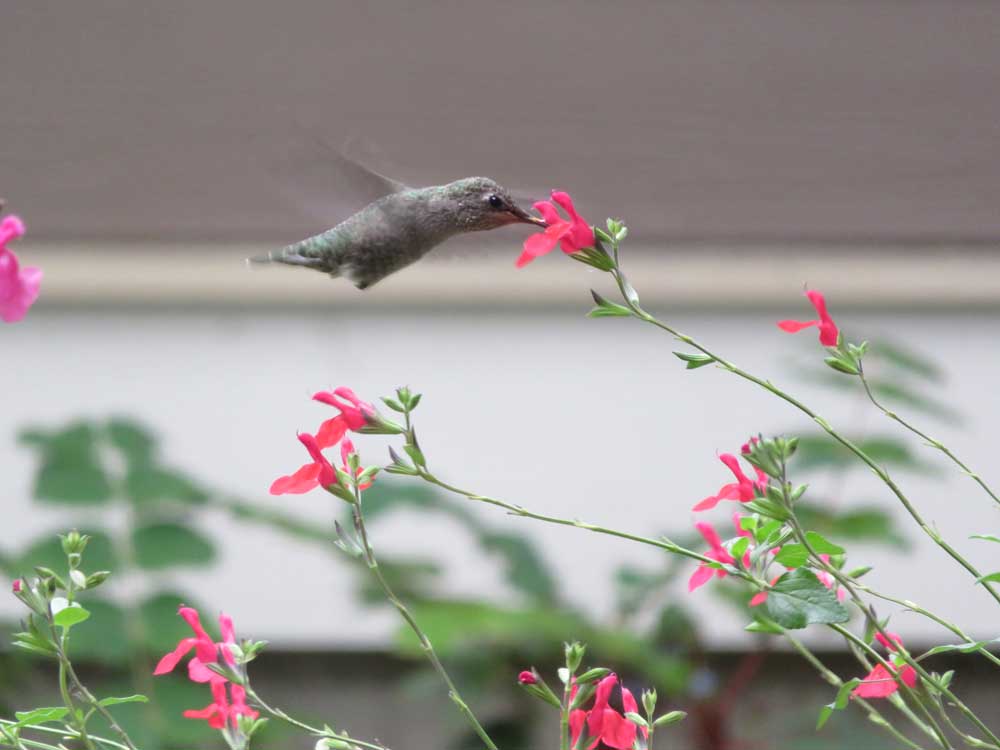Birding: It’s prime time to enjoy our West Coast jewels
Published 4:17 pm Thursday, March 24, 2022

- Non-native plants like Salvia provide nectar into the late fall on the west coast.
Spring officially began March 20 this year. It is then that we usually begin to think about our nesting birds. Some will begin to nest early which may be in April or May. Owls for example, are already on nests and some may already have young clamoring for food.
Trending
However, there are a few species that are adapted to nesting in winter and very early spring. The Anna’s hummingbird is one. This winter a reader reported seeing a nesting Anna’s hummingbird. It was beginning the nest-building process around Feb. 25. I thought this was unusually early until I began to research the literature on the Anna’s hummingbird. The earliest date I found on record for nest building was Feb. 9.
According to scientists, Anna’s were found mainly in Northern Baja California and southern California in the 1900s. Since then, their range has expanded. The Anna’s hummingbird now resides as far north as British Columbia and sometimes wanders into the state of Alaska. Evidence also indicates that this species is expanding eastward.
According to the Birdwatching Newsletter, the main reason for this expansion of its range is the presence of “nectar feeders in urban areas” which provide the same “sucrose sugar that the hummingbird favors.” They turn out to be “a super-rich food source.” This is a very beneficial relationship. In addition, many gardens are rich with plants that bloom earlier or later than our native flowers. This adds to a longer period for hummers to feed on plant nectar. Examples of plants that may flower in winter are Oregon grape and heathers. In addition, the prey that Anna’s feed on, such as midges and spiders, are high in protein. This diet is thought to help the species to tolerate colder conditions along the West Coast (Ballard, 2019). Anna’s hummingbirds can also drop their body temperature (also known as torpor) and reduce their respiration rate at night, all of which helps the birds survive colder weather (Green, 2013, Birdwatching Newsletter).
Trending
Nest-building construction is by the female Anna’s hummingbird and takes about a week. She uses plant down and spider webs for her 1 inch by 1.5-inch nest. She is conscious of its appearance, so she decorates the outside with moss and lichens. The female Anna’s is a duller metallic green above compared to the male. Her underparts are a drab gray. She sports a few reddish- or magenta-colored feathers on her throat. According to scientists, this small gorget is unusual for female hummingbirds. The male, on the other hand, has a magnificent-looking iridescent gorget and crown of reddish or rose-pink. It is the only North American hummer that has a full reddish crown.
Those of us who have hummingbird feeders are now experiencing an increase in hummer activity in our yards or gardens. Now that the rufous hummingbird is back there is fierce competition for the sweet nectar our feeders provide. Anna’s are busy defending their food source against the more aggressive rufous hummer. The rufous male is especially aggressive in the early spring.
Anna’s hummingbirds have learned to survive the winter. They are with us all year and are the most common hummingbird on the West Coast. They have become permanent residents in the urban areas of the Pacific Northwest, along with the spotted towhees, chestnut-backed chickadees, black-capped chickadees, and dark-eyed juncos. Keep an eye out for these West Coast iridescent jewels. Happy birding!
BREAKING NEWS: The eggs have hatched.









